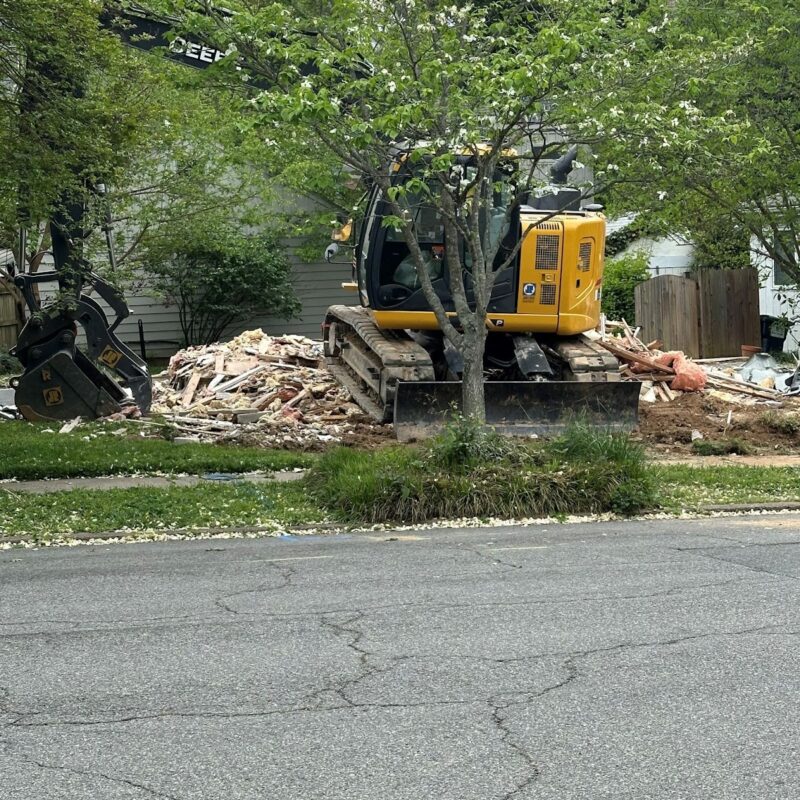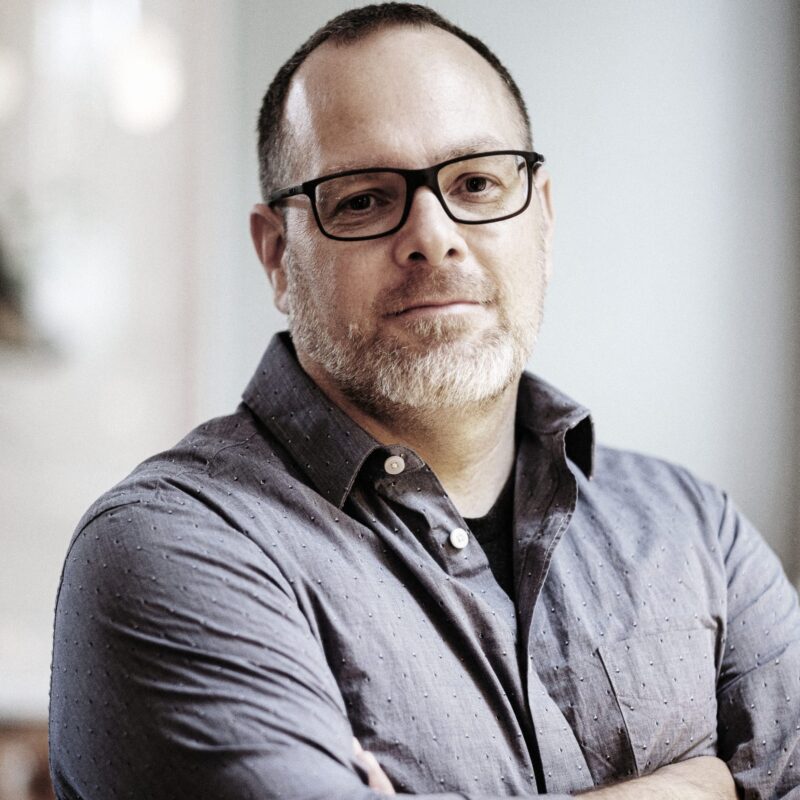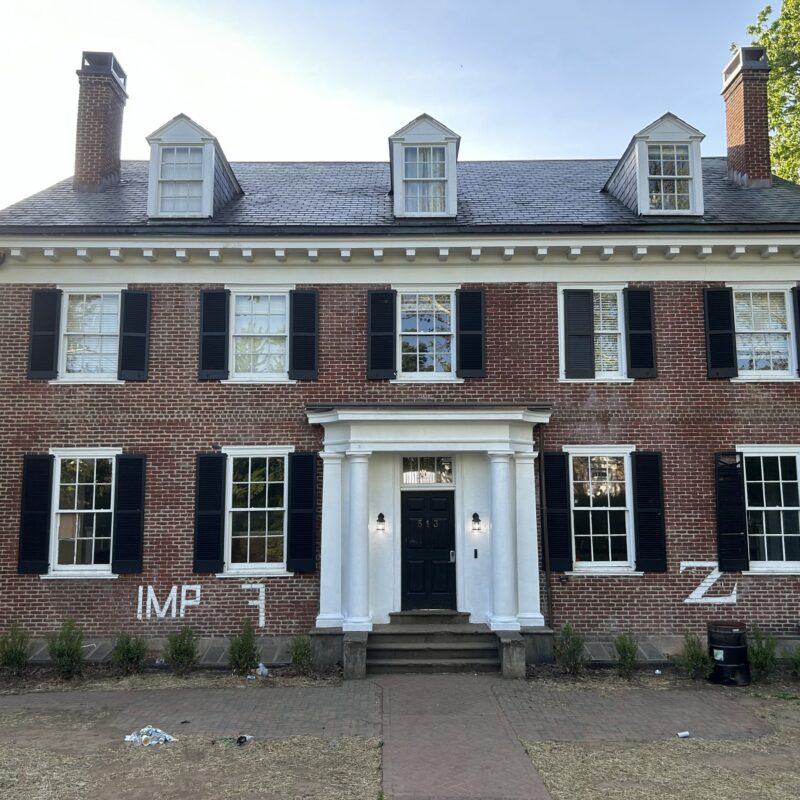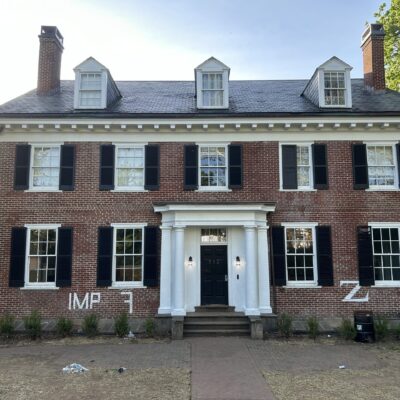It’s just after 2am. As the temperature drops into the 30s, four men creep around the corner to the front door of Mountain River Outdoors Inc off Route 29N. They’re here to get what waits inside: black-market gold. Guns.
It’s cold, but a few degrees warmer than the night before, the night one of them blew the heavy-duty steel door out of its frame with a sledgehammer, triggering the store’s alarm. He’d slunk back out of sight, clocking the police’s response time. Tonight they know they have three, four minutes tops.

“We have some sort of attempted break-in probably once a year,” Mountain River’s owner Ross Tierney says. “Very rarely do they get in.” But the loot from one successful burglary ended up in New York City.
|
| More features:
One-stop shopping Heat 101 |
Ross Tierney, owner of Mountain River, had ordered a new door earlier today when he found the front door jam and frame splintered. He repaired the door as best he could, patching the frame with some wood he had lying around, and went home after another 10-hour work day, hoping for the best.
Tonight, though, the four men, ages ranging from 16 to 21, walk into the store with no problem. They break in through the jury-rigged door as the alarm sounds for the second time in 24 hours.
Once inside, they walk past the cash register, past the fishing rods and reels, past the display of hunting arrows with their neon sights, knowing that what they want is in the back room—the two cases in front of the rack of rifles and shotguns. Time is short.
The display case on the right is first. One or two or all four of the men begin to smash the glass that separate them from the semi-automatic pistols inside—9mm Smith & Wessons, Glocks, Sig Sauers. The case is no simple matter; built for security, the glass is like a car’s windshield, made to crack but almost impossible to shatter.
One blow, then another and another and the four are finally able to crack the glass enough to get a hand or two between it and its frame. They rip the glass back far enough to get what they need, and now they’re almost out of time.
They grab 14 guns and check the clock. They’ve been in for almost three minutes. The second display case, the one holding the revolvers—its glass panels are broken, eighth-of-an-inch cracks across each, but still in their frames and now the four are out of time.
The police rush to the store in under five minutes. The door’s open, one case is pried open and there’s a cache of semi-automatic pistols missing. But nobody’s there.
Tierney arrives minutes after the police, fresh out of bed. First thing, he calls the Bureau of Alcohol, Tobacco and Firearms, better known as the ATF, to report the stolen guns. After filling out the requisite forms, he starts to clean up his store, dejected.
“They were in and out in three minutes,” Tierney says, nearly a year and a half later. “They did their job as good as anybody could ask.”
30 Minutes, No Waiting
For almost 20 years, it’s been known as the Iron Pipeline, though nobody’s sure where or when the name was born. One of its earliest appearances came via The Atlanta Constitution, in a story about the role of Georgia’s lax gun-control laws. The 1993 story dubbed Interstate 95 the Iron Pipeline, the route that illegally obtained guns take up the Eastern Seaboard, the same route that drugs come down in exchange, more often than not, for those guns. Now I-95 is a well-known thoroughfare for a black market driven by supply and demand.
Drugs, more prevalent and cheaper in Northern cities like Boston and New York City, are smuggled south into states like Virginia and North Carolina, where gun control laws are a lot less stringent. The drugs are traded for easily obtained guns—guns that head up to Northern cities, guns with street prices hundreds of dollars less than if they’d been copped up north.
In New York, Virginia is the second leading place of origin for guns recovered in crimes. The first, as is the case with most states, is the state of recovery itself, New York.
“The flow of drugs here has been going and it continues,” says Bill Dunham, an ATF agent based in Richmond. “The firearms—either stolen or straw-purchased—are more accessible, easier to buy here than some of the northern states. It makes for a natural trade.”
Everything you need to buy a handgun in Virginia is in your wallet: an in-state driver’s license, a second form of ID and cash. Assuming you can pass a background check (completed in the store), and can fill out two forms (one state, one federal), you’ll walk away with a gun in less than half an hour. Though it retains the right to make you wait up to five days, Virginia does not have a mandatory waiting period.
Compare that to New York City’s restrictions, a place where Virginia is the largest source for out-of-state guns. City law requires a permit to simply buy a gun. That permit requires a separate gun license. To get a license, you have to be 21 years old, have a record that’s clear of felony convictions or other “serious offenses,” be of “good moral character,” have no record of mental illness and a bundle of paperwork that includes two photos, a birth certificate and fingerprints. Once you’re done there, you must shell out a $439 fee.
That process may take up to a year. In Virginia, you can walk out with a brand-new gun after 30 minutes in a store. At Virginia gun shows, if you buy a private firearm from someone’s personal collection, the seller doesn’t have to run a background check or process any forms. It’s an honor system.
Virginia does, however, have a policy designed to crack down on the mass northern exodus of illegal guns. Buyers are permitted to purchase only one every month. The one-gun-a-month policy is meant to discourage straw purchases, which is the practice of having someone with a Virginia driver’s license and a clean record act as a stand-in for someone who can’t legally buy a gun. The law was passed as a reaction to what amounted to a weapons free-for-all almost 20 years ago.
“We’ve seen [the one-gun-a-month law] cut down on the large-scale trafficking,” says the ATF’s Dunham. “Back in the early ‘90s you’d have a car come down from New York, use his cousin’s Virginia driver’s license and back up to the gun store and buy 50 .38 pistols, load them in the trunk, and up they go to New York where they double and triple their money. That was pretty prevalent back then.”
Countdown to Ecstasy
Two weeks after the Mountain River robbery, police and ATF agents had concrete suspects. After another two weeks, they had made four arrests. As the investigation continued and the trials for the four men approached, some of the 14 guns started to show up. In New York. The men had traded some of the guns for about $1,500 worth of methlenedioxymethamphetamine, a synthetic psychoactive drug that acts as both stimulant and psychedelic. It’s better known by its street name—ecstasy.
Dunham says the ATF was able to track down some of the guns by, as he calls it, “debriefing” witnesses and defendants. “When guns are recovered, we trace them,” he says. “The guns are put in NCIC [the National Crime Information Center] when they’re stolen, and any police agency that recovers the guns would know they were stolen out of Charlottesville.” The NCIC is a federal computerized index of criminal justice information, such as criminal record history and stolen property.
That guns stolen from Charlottesville found their way to New York is no surprise. Dunham says the Iron Pipeline has many ancillary routes, smaller tributaries that feed into the I-95 corridor. Interstate 81 has a significant amount of guns-for-drugs traffic, as does Highway 29.
Interstate 64, connecting Charlottesville to Richmond, also serves as a smuggling route. “We’ve had some investigations where the subjects—either from Charlottesville or Richmond—were doing deals,” Dunham says. “There is a natural flow going back and forth.” The ATF, however, can’t gauge or won’t give away its volume. “We see it, and we know it goes on,” Dunham says. “But I don&rsq
uo;t have any numbers.”
Tierney, too, has all the proof he needs that I-64 feeds into the Pipeline. “The prime example,” he says, “is that our guns ended up in New York.”
In the trial and conviction of Louis Antonio Bryant, the Charlottesville leader of the local “Project Crud” crew that earned its violent reputation for protecting its drug trade with heavy firepower, the prosecution was able to offer as evidence a gun that police had recovered at the 2004 MTV Music Awards in Miami. It was a handgun with frightening stopping power, capable of firing a .454 Casull handgun cartridge. The .454 Casull is a bullet designed for hunting medium to large game, an even larger bullet than the .50-caliber Action Express handgun.
The prosecution tied the gun back to a member of Project Crud. “It was a gun that we could bring back to one of the defendants and show that this gun was purchased at the direction of one of the defendants and was used up here—either brandished or whatever. And then a guy gets arrested with it in Miami.”
Unlike drugs, which are taken off the black market once they are consumed, guns have long shelf lives. From the time it is purchased to the time it’s recovered by police, the majority of guns remain on the market for an average of 10 years. This means that a single gun, until it is recovered by police, can pass among multiple people, criss-crossing the region across state lines, making it virtually impossible to track until it’s used in a crime that authorities can both solve and prosecute.
If either one of these things can’t be done, the gun remains in circulation even as new ones come on the black market. Of the 4,870 guns used in the commission of a crime in Virginia last year, the vast majority, 2,856, sat undetected for at least three years, many of the guns for much longer than that.
Econ 101: Supply Side
Like every black market, the Iron Pipeline serves an under-met demand. As long as the demand for handguns in northern states continues to dramatically exceed its tightly regulated supply, and as long as the supply of readily accessible guns continues to exist in southern states due to looser restrictions, even measures like Virginia’s one-gun-a-month law and New York Mayor Michael Bloomberg’s recent city-run sting operations into gun stores in southern states will have negligible effects.
One effect Virginia’s one-gun-a-month law has had, however unintended, is to flatten out the illegal gun trade. Larger smuggling runs have dissipated into more frequent, lower-volume trips up north.
“The demand didn’t diminish any,” Dunham says. “I think rather than have a few large-scale dealers, there are many one- and two- and three-gun smugglers. And the problem is, they’re harder to catch. They’re less likely to be prosecuted. Sometimes [federal prosecutors] don’t want to prosecute somebody who just did one or two guns. Somebody does 50 guns…that’s a different story.”
As gun restrictions tighten, smugglers’ strategies evolve with them to accommodate and eventually thwart new laws. Evolving smuggling techniques force the ATF and local police to adopt new enforcement strategies. In a strange way—but one that an economist might have predicted—it’s possible the Virginia’s one-gun-a-month law might ultimately make the ATF’s job more difficult.
“Overall, it cuts down on the number of guns, but it spreads the risk out,” says Dunham. “Trying to monitor the recovering and tracing of guns and see who’s buying them and what they’re doing with the guns…yeah, it makes more legwork for us.” There is also less payoff for the increased legwork as the number of guns that smugglers run in a single trip dwindles.
Dunham says, however, that federal attorneys are shifting their prosecutorial strategies as the trade evolves. “We are getting federal prosecution on some of these people. The U.S. Attorney’s Office realizes that this is [now] the typical gun-smuggling operation, and you’re not going to get somebody with 100 guns.”
No matter what officials do to regulate the supply, demand remains unrelenting. Another possible side effect: Squeezing the supply side leads to an increased number of burglaries and robberies of gun stores like Mountain River.
“We have seen a number of burglaries of gun stores,” says Dunham. He points to Richmond, where four men walked into a gun store, drew their own guns, and robbed the clerk of about 80 rifles and pistols. The men were later arrested by the ATF. All four pleaded guilty.
“Some of the guns were recovered,” Dunham says. “But the majority of them haven’t been.”
And they pop up in the strangest of places. One day, as a Virginia State Police dive team was practicing in the James River, one of the divers felt something strange on the riverbed. The team pulled up five of the stolen guns—AR-15s, lightweight, magazine-fed rifles. “Basically,” says Dunham, “the semi-automatic version of an M-16.”
The Need for Armory
Ross Tierney leans back in his chair, surrounded by stacks of paperwork. He’s been digging through his computer, the one he uses to run background checks, trying to find specifics of the 2006 burglary. The problem of the Iron Pipeline, as he sees it, is simple supply and demand. Measures like the one-gun-a-month law only work on half of the equation.
“It doesn’t stop the problem,” he says. “The problem is the drug problem and the demand for armory for the drug dealers.”
Tierney opened Mountain River on September 16, 1996. It was, and still is, a way to turn his love of hunting and fishing into a full-time gig. Of the people who come in wanting a handgun, most are looking for a gun to take to the range, to shoot and have fun with. They also want a gun for home safety. And almost all of them want semi-automatics. For every revolver he sells, Tierney sells 20 semi-automatics.
He routinely works 10- and 12-hour days. Over the 13 years the store has been open, he’d only had two successful break-ins where guns were taken from the store. That doesn’t mean folks aren’t trying.
“We have some sort of attempted break-in probably once a year,” he says. “Very rarely do they get in.”
According to The New York Times, as much as 60 percent of the guns used in crimes nationwide come from 1 percent of the country’s dealers. Tierney is, of course, not in that 1 percent. In fact, he had no problem with Bloomberg’s sting operations in Virginia’s gun stores, something that raised a furor across the state and caused state Attorney General Robert F. McDonell to send a de facto cease-and-desist letter to the New York City mayor.
“More power to you,” Tierney says about Bloomberg’s stings. “Other than a little bit of the Big Brother-type philosophy, which nobody likes, I don’t have a problem. I’m not going to have a problem selling illegal guns. I think any gun store would be happy to see any other store that’s doing illegal activity shut down.”
But they weren’t. The Virginia Citizens Defense League (VCDL), a gun-rights organization, held what it called the “Bloomberg Gun GiveAway.” Anyone in attendance at the
VCDL meeting was eligible to win a handgun or rifle. The meeting was scheduled to be held April 19, three days after the shootings at Virginia Tech. VCDL pushed it back to May 17, where it gave away both guns at a meeting complete with cakes mocking Bloomberg.
Tierney says that the local police and ATF “both did a phenomenal job” after the break-in. “You literally couldn’t ask for people to be more responsive. They were on the ball.”
But even after the arrests and the convictions, the fallout from the 2006 burglary continues.
“I went to court a week ago,” Tierney says. “They were prosecuting a person who had bought one of the stolen guns.”





